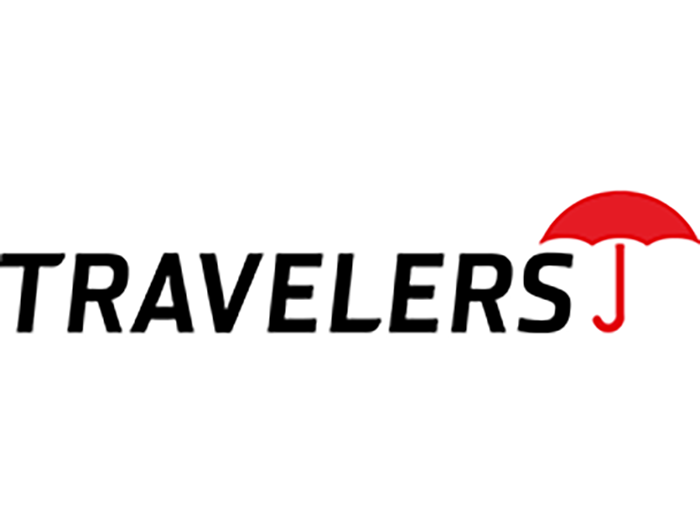Looking to Attract and Retain Talent? Here’s How Your Benefits Package Can Set You Apart

Attracting and retaining top workforce talent is crucial for employers who face many risks when workers leave including a loss of productivity, burnout among those picking up the workload, and the increased potential for accidents.
To keep employees content, many organizations are expanding or offering new benefits including family leave, mental health and wellness programs, tuition and professional development, and fertility treatments.
“Big companies are looking at ways to differentiate themselves,” said Laura Flynn, vice president and partner at The Plexus Groupe. “They are thinking about benefits and, if they aren’t, they are missing the boat.”
Having an employee jump ship because the salary or benefits are better at the shop across the street is a costly situation that no employer wants be in.
“In this competitive environment, employers need to establish themselves as a “destination employer,” which is an employer that has a reputation of being kind and supportive, with employees who talk about the organization as a place they want to work,” said Andrea McNamara, SVP, underwriting operations, accident & health, QBE North America. “You cannot put a price tag on that for recruiting.
Some costs, however, are clear. The Society for Human Resources Management (SHRM) reports that the average hard cost of hiring a new employee is nearly $4,700, which doesn’t take into account the many other indirect costs including the time spent by staff in interviewing and screening potential hires and the decrease in productivity.
Offering the sorts of benefits that will be meaningful to today’s workers isn’t easy, however, especially because today’s employers, are dealing with five generations that are currently in the workforce: the Silent Generation (born before 1946), Baby Boomers (born between 1946 and 1964), Generation X (born between 1965 and 1980), Millennials or Generation Y (born between 1981 and 1996) and Generation Z (born after 1997).
Derrick Wong, employee benefits practice leaders at Risk Cooperative, said the competitive environment of recruitment and retention has become more diverse and complex, particularly post-pandemic.
“It’s becoming increasingly evident that a one-size-fits-all approach to benefits is no longer sustainable,” Wong said. “As organizations hire more employees from various backgrounds, cultures, and age groups, it’s important to recognize that a comprehensive benefits package needs to be as adaptable and diverse as the makeup of its employee staff members.”
Flynn agrees, adding that “employers are trying to figure out what benefits each demographic wants.”
What Are Employers’ Top Priorities?
Gallagher’s 2022 U.S. Physical & Emotional Wellbeing Report found that employee retention and attraction are top priorities at nearly half of the more than 4,000 U.S. employers it surveyed that had experienced turnover of 15% or more in 2021.
The survey showed that 78% of employers had increased salary budgets–up 6 percentage points from 2021–but they also were focusing on changing benefits to appeal to a diverse workforce.
Among the benefits being offered, the survey found that 42% now offer medical coverage to domestic partners and about 24% extend this benefit to part-time employees. Forty-six percent now cover infertility or fertility treatments.
Other benefits noted in the survey include autism spectrum disorder treatment covered by 45% of employers, bariatric surgery offered by 49%, gender reassignment surgery covered by 25%, and gene therapy services offered by 14%.
“Big companies are looking at ways to differentiate themselves … They are thinking about benefits and, if they aren’t, they are missing the boat.” — Laura Flynn, vice president and partner at The Plexus Groupe
A top benefit for 55% of employers is applied behavior analysis, a type of interpersonal therapy used to address a range of behavioral issues.
Kathleen Schulz, global innovation leader, Organizational Wellbeing at Gallagher, ties the change in approach to benefits to the pandemic.
“The whole world changed and we realized you can’t just keep doing what you were doing,” she said. “Organizations are trying to understand what levers they can pull to attract, retain and engage talent.”
Niche and Voluntary Benefits
Because of the continuously changing landscape brought on by COVID-19, Matthew Murphy, assistant vice president of Benefits at AmTrust, said benefits today are better targeting employees’ particular needs.
“Employers are doing a better job than they have historically in supporting gaps in benefits,” he said. “For example, fertility support, student debt, paternity leave, mental health, and the list goes on. Many employers continue to invest or have these on their list of potential improvements in order to make their benefit offerings more well-rounded and support the full person.”
One benefit that he sees gaining traction involves employers helping to alleviate student debt.
“[Student debt] is a real concern for a wide range of employees, from those carrying the debt themselves or attempting to assist children or even a spouse with it,” he said.
Another lever that employers can pull to engage with employees is to offer more options through voluntary benefits, many of which are funded by the employees themselves.
“Voluntary benefits are a powerful tool to provide additional choice,” Flynn said. “They are valued by employees, but don’t cost the company a whole lot.”
Some voluntary benefits include pet insurance, long-term care insurance, identity theft insurance, critical care insurance and access to discounts and perks.
Achieving Better Work-Life Balance
With hybrid and remote work now the norm for many organizations, more employees are seeking benefits that help them uphold work-life balance. “We are seeing the biggest focus on psychological well-being, which includes promoting employee assistance programs and telehealth resources along with traditional in-person provider access and access to on-demand applications for stress management, as well as different types of caregiver leave,” McNamara said.
“In an effort to promote healthy lifestyles, we have seen employers offer unlimited mental health sessions for the year, extra wellness days/more paid time off, reimbursements related to physical activity/healthy weight, nutrition promotion, and alternative/complementary health,” she added.
With many people, particularly women, gradually making their way back into the employment market after having stepped away temporarily as a result of caregiving gaps brought on by the pandemic, benefits that support their caregiving roles are an imperative for some workers.
“Openings at child and adult day-care centers have become even harder to find in many areas since the pandemic. Benefits such as on-site childcare, back-up care for family members (children, seniors) and flexible schedules can be enticing for employees who identify as caregivers,” McNamara said. “While being a caregiver can be a source of pride and can strengthen family bonds, it is not without great stress to the working person.”
Providing a Sense of Fulfillment
As more people contemplated the portrait of their lives during the height of the pandemic, some opted to relocate, shift careers, or paint a clearer picture of where they want to go with their careers. This opened opportunities for companies with strong professional development benefits to appeal to employees seeking to sharpen existing skills or hone new ones.
“Other types of benefits frequently seen are related to self-improvement and career mobilization including tuition reimbursement and certifications advancing career development,” McNamara said.
“Fostering an inclusive team culture that allows employees to pursue career advancement opportunities not only increases motivation and improves workplace outcomes, it also adds to employees’ sense of fulfillment.”
Variety in Health Plans Matter
While out-of-the-ordinary benefits are drawing greater attention, health benefits continue to be top of mind for both employers and employees.
“After pay, health care benefits are the most important factor in attracting and retaining employees,” McNamara said.
The Gallagher survey also found that a larger choice of health plans gives employees an opportunity to find a better match for their unique coverage criteria.
Among the 77% of employers that offer more than one plan, 35% offer two, while 26% expanded the selection to three and 16% offer at least four.
At 84%, preferred provider organization/point of service plans are the most frequently offered. The number of employers that pair a consumer-directed health plan (CDHP) with a health savings account (HSA) continues to rise, now 51%.
And increasingly, the care employees receive through those health plans is also more wellness oriented. “Many providers of healthcare are shifting from a disease prevention/management model to a wellness model of health promotion that encompasses emotional, financial, social, occupational, physical, intellectual and many other dimensions,” McNamara said.
Although medical and pharmacy benefits are typically the benefits that are most at the forethought of both employers and employees, “not every employee is enrolled in those benefits,” Murphy said. “I think that retirement and an overall corporate wellness program are also items that employees pay attention to.”
“… it’s important to recognize that a comprehensive benefits package needs to be as adaptable and diverse as the makeup of its employee staff members.” — Derrick Wong, employee benefits practice leaders, Risk Cooperative
He notes that at his company he’s seen strong employee engagement with wellness-related benefits: “Employees seem to crave and utilize education and support in the realm of wellness, both physical and mental.”
Growingly, employees themselves are often at the helm of wellness initiatives within an organization. “We are seeing a surge in employee resource groups that support not only employee health but also wellbeing incorporating a whole person approach to benefit offerings,” McNamara said.
Appealing to Employee Needs and Keeping and Eye on Costs
Being able to offer expansive benefits may sound appealing, but Flynn said there are many considerations to take into account and employers need to anticipate what other costs may result.
For example, offering fertility treatments is not necessarily a one-off cost.
“It sounds easy to say, ‘We’re going to give you $20,000 for fertility treatments,’ ” she said. “But, as a result, you may have more births, more premature babies, and that can become costly.”
Employers need to look at the demographic makeup of their workforce as they make benefits decisions. In the case of fertility treatments, “you need to look at the women of child-bearing age and figure out your liability,” she said.
John Gallant, senior vice president at The Hartford, said there is also no point in offering benefits that employees don’t use. He said it’s crucial to learn what employees want and educate them about what is being offered.
McNamara agreed that offering new benefits is not always necessary. Sometimes, making sure employees know what is already available to them is the missing piece of the equation.
“A strong employee benefit package helps workers stay happy, and a happy team leads to more productivity, creativity, and an overall sense of wellbeing,” she said. “For some employers it could be as simple as helping employees better understand the value of existing employee benefits and how to access the benefits.”
One way to improve engagement is in changing terminology. The Hartford changed the name of its accidental death and dismemberment benefit to accidental loss of life and severe injury benefit. The previous name caused confusion and worry, said Gallant, who added that “complex language is a barrier.”
The Balancing Act
“Employees want to work for a company that values them and centers the employee benefit package around what the employees’ needs are as an investment in their lives and their futures,” McNamara said.
And deciding what suite of benefits to offer is a balancing act.
“You’ve got to figure out what will work for your population, how much money you have to spend and what benefits employees will really use,” Flynn said.
There are downsides to not getting the benefits balancing act right and they can greatly impact insurance rates.
“High turnover rates may be viewed by insurance underwriters as higher risk, which translates to increased insurance premiums,” Wong said.
Benefits are dynamic, and Gallant and others are keeping an eye on how recent tech company lay-offs or a downturn in the economy will impact them.
“Benefits are a perpetual conversation,” Gallant said.
“I think that leaders will push for evidence to justify changes [in benefits], and this is a responsible way to run a business,” Murphy said. “We do not want to be adding benefits with no value for individuals.” &












